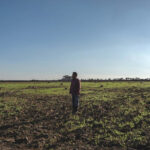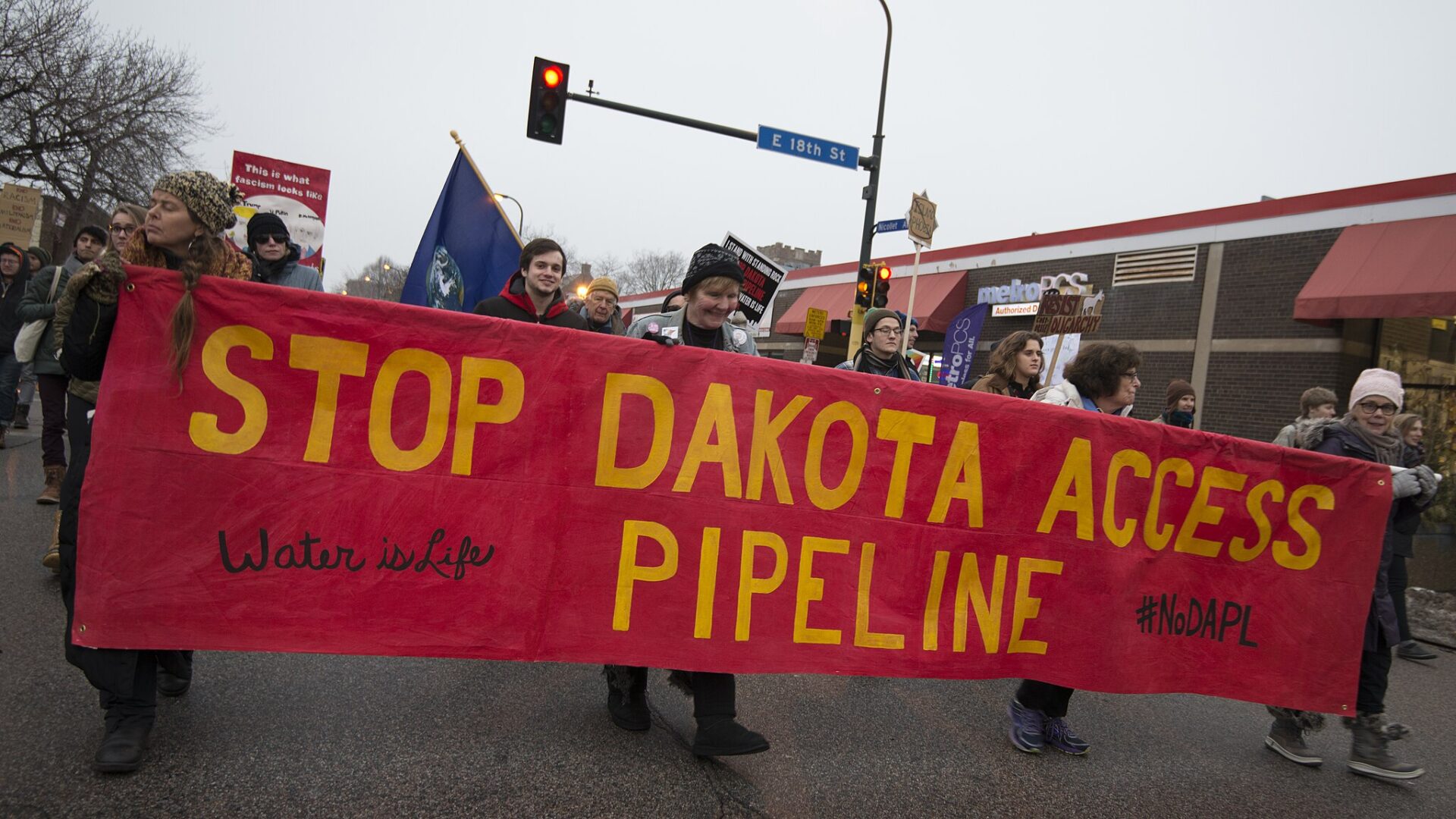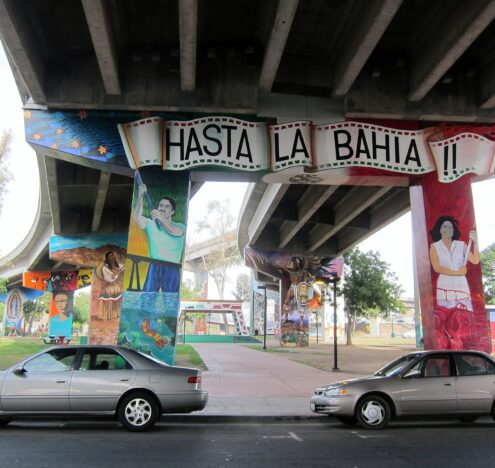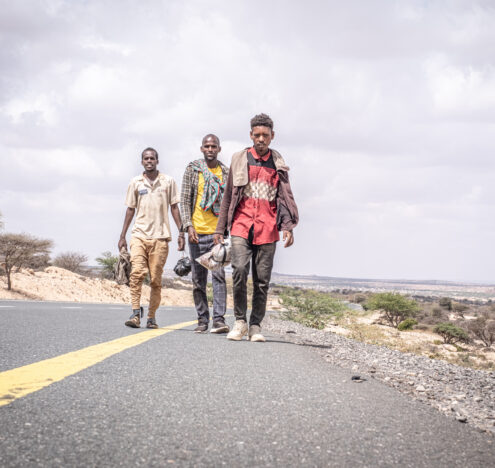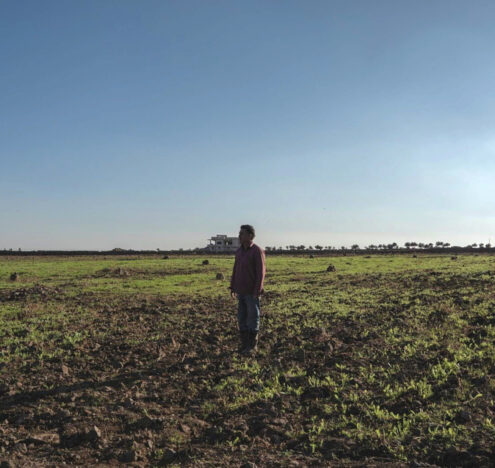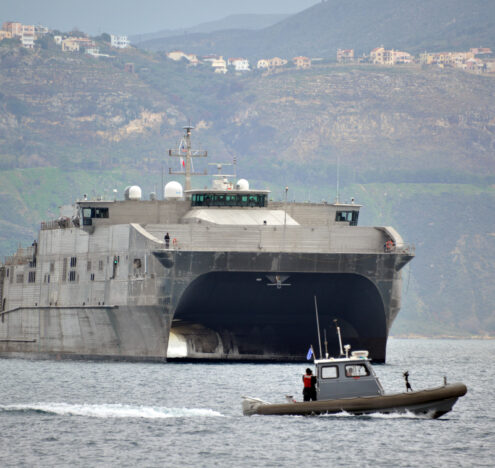Shortly after exiting the gas station with a drink meant to sate his thirst, the man hit the pavement. It was a triple-digit day in Phoenix, and he’d passed out from exhaustion. Worse yet, the scorching cement caused such severe burns on his leg that he first needed skin grafts, then amputation.
Dr. William Ellert would meet this man years later at a respite center that serves people experiencing homelessness. The amputation, Ellert learned, had upended this man’s life.
“He’d lost his job, his home, everything,” Ellert says. “That’s how he ended up connecting with us, and we worked with him on healing his wounds.”
Ellert is chief medical officer at Circle the City, a Phoenix nonprofit that helps unhoused people. Seeing grievous injures like the ones this patient had isn’t new to him, but over the phone in early December, he said he worried they could become even more common.
“Getting Worse”
“The problem is, it’s getting worse,” he says. Earlier this year, his city experienced 113 consecutive days of triple-digit heat. Phoenix is one of the epicenters of the climate crisis, which also means they’re in the unenviable position of being a model for how to cope with extreme heat.
“A lot of people reach out from Nevada, and I hear from Florida, Tennessee and Virginia, too,” says Cleo Warner, a human services planner at the Maricopa Association of Governments. “Some are large communities, some are very small communities, but they all need help.”
Facing inaction at the federal level, cities, counties and their residents will likely need even more help with life on a warming planet. As Donald Trump enters his second term, climate action — at least for those on the ground — will be all about stopping the bleeding wherever they can.
Threat Multiplier
More worrisome still, global warming is increasingly becoming a security issue. For instance, the Department of Defense refers to climate change as a threat multiplier that diminishes the nation’s ability to defend itself. In a speech earlier this year, Richard Verma, a deputy secretary of state for management and resources, discussed climate change in the same breath as terrorism. (According to Verma, “impacts from climate serve to exacerbate existing tensions and fault lines, increasing the toll on the most vulnerable and giving a lifeline to extremist forces.”)
These security risks have also been a topic of discussion at the World Economic Forum, where a recent presentation mapped out the interconnectedness of global warming, diminishing resources and mass migration.
As explained by Andrew Zolli, the chief impact officer at the satellite imaging company Planet: “If you create an environment where people are hungry, suddenly they become restless, so they begin to move. And then you have migration changes. And those migration changes can show up in complicated ways geopolitically, and they can be sources of stress and tension and change. So everything is connected to everything else.”
Worse still, recent anthropological research indicates that climate migration can lead to interstate conflict.
Internal Migration
That displacement might not just take place on the global level, either: multiple sources indicate millions of Americans could migrate within the county as a result of climate change. ProPublica climate reporter Abrahm Lustgarten has written an entire book — titled On the Move — detailing the ways global warming will force millions of Americans out of their communities, much to the detriment of people of color, older citizens and low-income Americans.
Despite these long-term trends, Phoenix is growing, a fact that will stretch its resources and fuel rising housing prices, all while its citizens cope with scorching temps.
Worse still, Phoenix residents — including those in government — worry that federal funding (which already wasn’t enough) will dry up under the new president.
“Worst President in Environmental History”
Bob Deans, a senior advisor with the National Resources Defense Council, says Trump is “the worst president in environmental history.”
During his first term, Trump’s administration rolled back hundreds of rules meant to provide clean air and water while curbing greenhouse gas emissions. According to one estimate, these rollbacks could result in over 1.8 billion metric tons of extra carbon dioxide flowing into the atmosphere in the next decade, further increasing global temperatures.
Deans fears that Trump is not yet done and that more rollbacks are on the way. His team is preparing to fight those cuts in the court of public opinion and in actual court, and as of right now, he’s bullish on his chances. After all, he points out, “nobody voted for dirty water or dirty air,” and Trump’s first term heralded a new era of climate activism, one in which people rallied against pipelines and pushed for university divestment but also built a broader movement.
Climate Backlash
That movement ran into swift, multi-pronged backlash.
One example is the ongoing fallout from the Dakota Access Pipeline protests. During his first term, Trump threatened to treat some pipeline protests as a federal crime. States followed his lead, enacting laws designed to punish or discourage pipeline protestors. In a case that will go to court in February, Energy Transfer — the company behind the Dakota Access pipeline — has accused Greenpeace of inciting protests at Standing Rock. They’re suing the nonprofit to the tune of $300 million.
Echoes of Trump’s pipeline threat still reverberate: He is now threatening to use the military to stymie protests, and Russell Vought, an alum of the first Trump administration and current re-nominee for the Office of Management and Budget, has floated the idea of using the Insurrection Act to deploy the military against protestors.
Given all this, it’s easy to see why legal experts are concerned about a chilling effect on climate activism that will, in turn, increase pressure on local municipalities to pick up the slack.
A North Carolina student affiliated with the activist group Sunrise Movement effectively summarized these concerns at a recent event, saying, “We know that the federal government will not be encouraging and enforcing policy that will help protect the climate. So it’s up to the state legislature and school districts to take over and make sure that local action is being taken, in order to ensure safer buildings and a safer climate.”
“Hobbling”
Experts also worry that activism hasn’t translated to change at the highest possible level. Recent progress, they say, is more the result of business interest.
“The expansion in wind and solar is not driven by climate policy in an activist vein,” says Peter Girard, a vice president at the nonprofit Climate Central. Rather, he says, “It’s driven by businesses seeing an opportunity to expand.”
Meanwhile, Biden’s signature climate-related achievement, the Inflation Reduction Act (IRA), provided billions of dollars in clean energy rebates. Many cities have taken advantage of the rebates, yet there is evidence the funds haven’t benefited some areas of the country that need it most. What’s more, the IRA has only had a couple of years to bear fruit, and Trump has threatened to “terminate” the act and any more progress it can make.
The logistics of “termination” are murky at best, but the president-elect has also signaled his plans to streamline environmental permitting in a way that favors the oil and gas industry. (The Sierra Club calls the plan a “bribe.”)
To Deans, this rhetoric is alarming, though he is just as concerned by what he calls a “hobbling” of the government: a process by which Trump could purge federal agencies of the legal, scientific, medical, and economic knowledge needed to combat global warming.
“We know from history that it’s low-income communities and people of color who need relief the most,” he says. “These are people who live in what are callously referred to as ‘sacrifice zones.’ They’re working outside, doing construction, and in many cases, people in the most vulnerable areas have nowhere to go when it’s over 100 degrees for 100 days in a row.”
Heat Kills
For his part, Will Humble isn’t counting on the federal government.
He’s the executive director of the Arizona Public Health Association, and he stresses that “there are a lot of things we can do that are independent of the Trump administration.”
One priority, he says, is to secure affordable housing for people experiencing homelessness, many of whom are also struggling with mental illness. In Maricopa County, which includes cities like Phoenix and Mesa, the wait for housing could be months.
“It’s homeless people who are the ones dying,” Humble says. “If you run the numbers, you see the risk of dying [from heat exposure] is 500 times greater if you’re unhoused.”
That staggering number is indeed true in Maricopa County, where at least 645 people died from heat-related causes last year. Forty-five percent of those people were experiencing homelessness at the time of their death.
“Fighting a Losing Battle”
The numbers are not yet final for this year, but Rushdan, the nurse, fears they could be even higher than 2023. The temps were even higher, and homelessness has intensified.
Rushdan supports the heat relief program run by the Arizona Faith Network, and like Dr. Ellert, she has dozens of harrowing stories about the heat. She points out that many unhoused people suffer from medical conditions that go untreated, and she recently encountered one such man who didn’t have access to diabetes medication. He couldn’t feel the maggots eating away at part of his leg, though, in a way, they were a godsend — by eating the rot, they were keeping the infection from getting worse.
Rushdan’s organization relies on private donations to keep its heat relief efforts up, running, and expanding. She says it feels like she’s “fighting a losing battle”: the heat relief centers work well, serving many people in dire need, but the heat intensifies each year, as does the hunt for funding.
Warner echoed these concerns over funding. She frequently meets with nonprofits and local government reps from across Maricopa County, and she says, “When we all come together in the same room, it always comes to money.”
“Now We Carry IV Bags”
Her organization, the Maricopa Association of Governments, coordinates 94 cooling centers and 127 hydration stations across multiple cities, with each location meticulously chosen based on where the data tells them people are dying.
And they need more sites.
“Everyone is fighting to bring more funding,” Warner says, adding that the effort involves cobbling together grants, state and federal funds. The American Rescue Plan — the 2021 relief package created during the worst of the pandemic — was a boon for their efforts, providing much-needed funds to prop up sites as recently as this year. When asked if the Rescue Plan funds will be available again in 2025, she says she doesn’t know.
“I hope so,” she adds. “Because every dollar goes towards saving lives.”
Regardless, Warner adds her and her team “just have to keep working.” That’s what Ellert, the doctor, also said. Over the roughly quarter century he’s continued this work, he’s witnessed some big changes.
The city is hotter, the people are more prepared, and, by necessity, the work they do has become far more proactive. “One thing we used to do is send people to the hospital when they’re dehydrated,” he says. “Now we carry IV bags and hydrate them right there on the street.”
Top photo: On Jan. 20, 2017, thousands of protesters marched in Minneapolis against Donald Trump’s first inauguration (Fibonacci Blue/Wikimedia Commons)










